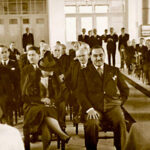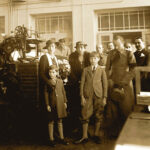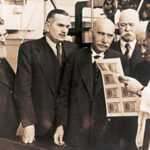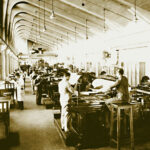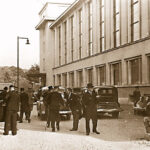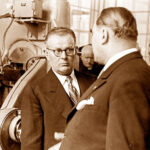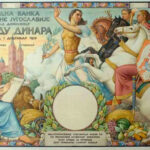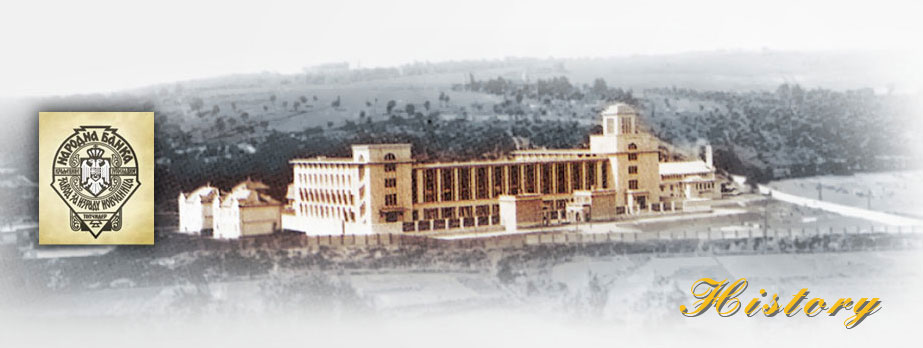
History of the Institute for Manufacturing Banknotes is inextricably woven into the history of banknote printing of the region. The decision on initiating the construction of the Institute for Manufacturing Banknotes was made at the Council of the Governor in 1925, during the term of office of governor Đorđe Vajfert. This task was assigned to Josif Najman, an architect noted for designing the French Embassy and the Trade Academy (today’s First Vocational School of Economics) in Belgrade. The construction works began in September 1927, ending in October 1929, and were greatly contributed to by the Banque de France. As construction went on, the first administrator of the Institute, Milivoje Obradović, travelled to France to acquire professional expertise at French banknote printing houses in Paris and Clermont-Ferrand.
The Institute started operating on 16th December 1929, printing 10-dinar banknotes. At the time, the company employed 139 people. The edifice was consecrated in January 1930, while the Mint for Manufacturing Coins officially started its operation in 1938 as an integral part of the Institute.
Many distinguished people have greatly contributed to the work and rise of the Institute. One of them was Milutin Milanković, president of the Acceptance Committee which was engaged on calculating the construction costs of the Institute. Little is known that Archibald Reiss, a noted Swiss forensic scientist and chemist, carried out the inspection of banknote counterfeits until the Institute’s foundation. It is his work that formed the basis for professional training of experts at the Institute. Also, his nephew Alfred Favre was employed as a photographer at the company. Prof. Momčilo St. Mokranjac Aga (D.Sc.), known as the father of Serbian toxicology, the son of the famous Serbian composer Stevan Mokranjac, worked at the Institute from 1935 to 1946 as the head of the Laboratory for precious metals analysis. Veljko A. Kun, one of the most prominent drawers and xylographers of Europe at the time, worked as a permanent employee of the Institute and he engraved all banknotes issued till the end of WWII. Mate Zlamalik, a famous painter and graphic designer, was also an employee of the Institute who greatly contributed to the design of numerous banknotes and postage stamps. Paja Jovanović, Vaso Pomorišac, Mladen Josić, Omer Mujadžić, all prominent academy-trained painters, designed many banknotes between WWI and WWII.
Over the years, the Institute has been visited by notable delegations from all over the world, as well as delegations from Serbian social and political life. Some of the most noteworthy visits were that of Prince Pavle Karađorđević and Princess Olga, as well as a visit paid by the Prime Minister of the Kingdom of Yugoslavia, Milan Stojadinović. Interest of this magnitude is not surprising, having in mind that the Institute was only the seventh such institution in the whole of Europe. The Institute has never ceased its operations – neither during WWII, nor during NATO bombing of Yugoslavia.
Historical data collected, preserved and edited by Nenad Rašković

